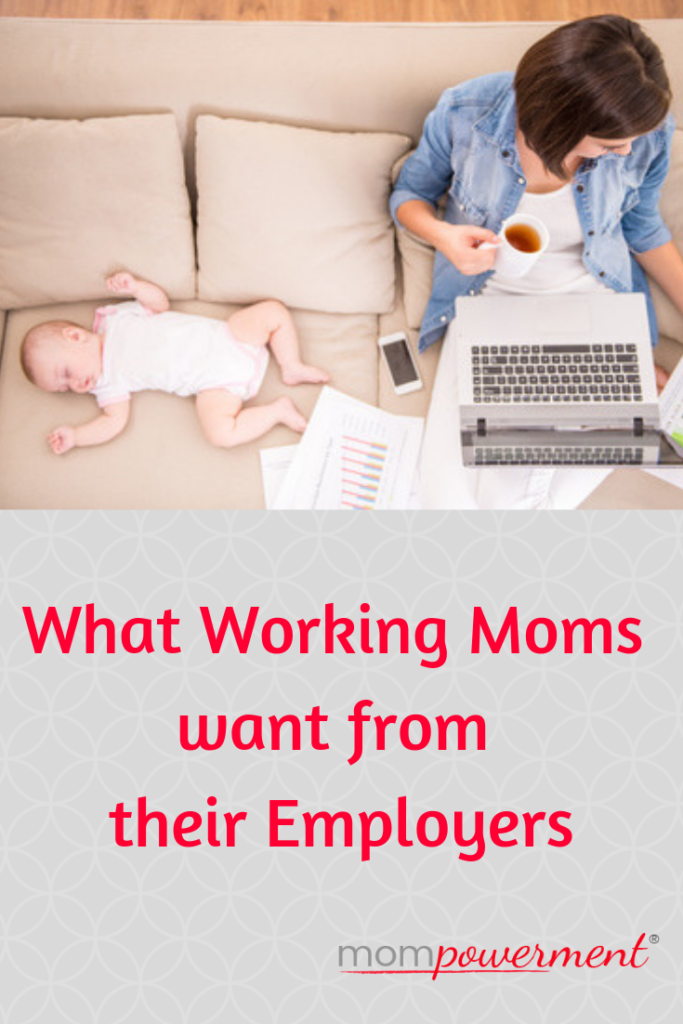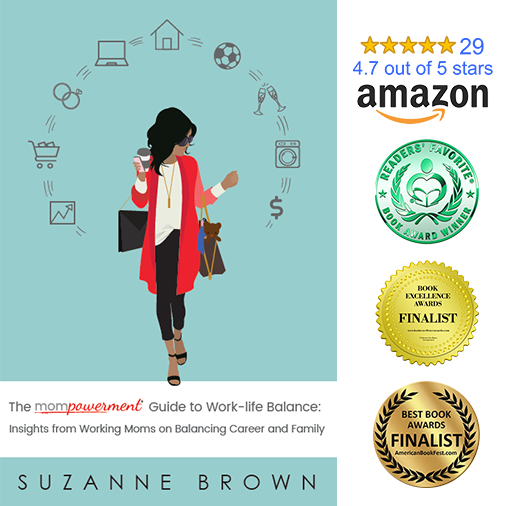
As the second of the 4-part
Overview of the interviews
You might be wondering who I interviewed. I talked to more than 110 professional working moms in a variety of industries. I spoke with working moms who are engineers, physicians, marketers, accountants, IT professionals, accountants, to name only a handful of the industries represented.
About 62 percent work for an employer, both big and small. The other 38 percent work for themselves. Many were entrepreneurs because they couldn’t find what they were looking for in an employer. It wasn’t just that their current employer wouldn’t provide a balance-friendly situation; it was that they simply couldn’t find it in their industry in general.
You might also be wondering about what I asked. I asked everyone I spoke with the same general questions with an adjustment for entrepreneurs. I might have asked a few additional questions, based on how the interview was going.
Specifically, I wanted to know about support from an employer. It was really interesting to hear how different employers provided that support. I also asked about what benefit they got from more work-life balance (e.g., more time with family, not medical and dental benefits) and what advice they would give to other working moms. When talking to entrepreneurs, I asked what led to starting a business and sometimes got the feedback about a lack of support from their employer.
What working moms I interviewed are looking for
The top 3 things that working moms shared that they wanted more of are:
The #1 thing that working moms talked about was time with family. As an employer what initiatives can you put in place that help employees get more time with their family? That can mean a lot of different things, depending on your industry. It could be how they work or where these working moms physically get things done. It could be when they work.
After time with family, moms were looking for flexibility. Flexibility can vary from industry to industry, company to company, and even from role to role.
I also heard consistently that moms were looking for more work-life balance. Again, balance can mean a lot of things. I’ll share that this is the topic I’m most asked about now. The consistent questions on this very topic is what led me to write my second book. No question that many working moms are looking for help in creating more of the work-life balance they crave.
Let’s talk about what this can look like from an employer perspective.
Flexibility
While flexibility looks different for each company and each family, the idea behind it doesn’t. Maybe working moms want to go appointments for their aging parent first thing in the morning or they want to start earlier so that they can pick up kids from school. Working moms want to be able to head out unexpectedly when a child goes home sick from school. They want to be able to work from home on the days when school is closed for a teacher work day. Making each of these circumstances require
Non-traditional work options
For some working moms the opportunity to work from home will help keep them in the workforce. That extra hour each way in commute time might mean they can’t fit everything in and simply can’t be part of a company anymore.
Or it could be that two moms get to do a job share. That could entice working moms to return to the workforce from time away because of the early motherhood years. And they will still have time with family once the school day ends each day.
As more working moms are being sandwiched between caring for their aging relatives and taking care of their children, non-traditional work options might be the perfect way to keep them in the workforce. We already talked about the cost of losing these working moms, so be creative in the solutions regarding where, when, and how people work at your company.
Even if companies don’t have these programs in place, an openness to them can help attract and retain women over time. And you never know where that openness might lead.
Work-life balance initiatives
Perhaps you have programs in place that are for all employees. Maybe you have a policy that keeps people from emailing when it’s not business hours. Perhaps you have wellness programs in place that combine healthy eating resources with
There are so many options out there from creating women employee resource groups (ERGs), online training to develop and master new skills, and even services that offer backup childcare or delivery of breastmilk when employees must travel.
Career growth for all female employees
Women I spoke with shared that in the companies where they worked and stayed long-term focused on opportunities for all women. Really, these employers wanted diverse workforces so they created opportunities for everyone to succeed, based on individual skills sets and areas of interest. How are you creating this long-term path for women, many of whom become working mothers?
Maternity policy
Maternity leave is an area that can generate a lot of debate. I won’t cover how it’s paid (since that is often part of the controversy in the US), but I will remind you that we’re one of not even a handful of countries that doesn’t offer paid maternity leave at a national level. Let’s keep in mind that we want and need women to have babies because younger generations are part of our economic engine long-term.
Perhaps you have maternity leave, even better, a paid maternity leave, and you allow mothers to heal and bond with their babies while getting into a rhythm. Don’t just offer up an idea; actually follow through and allow them to have the full time off. Don’t say you offer 16 weeks, but you expect moms back after 8.
And then consider what you can do to help new moms when they are returning to work, such as having a period of working in a part-time capacity upon initially returning to the office post-baby. This time off and the transition back to work can empower women to have a family and a career and not have to choose. Consider the tremendous message that gives as it relates to recruiting and retention.
Getting started
Maybe you’re reading this and thinking you want to make changes. How do you get started?
We know that working moms and likely other employees (especially Millennials) want some flexibility, so how do you know what kind of flexibility they want? Ask. Sure, you can ask point blank, which I suggest you do to see how they answer. You likely need to ask a few different ways, though, to get to the information you want.
Ask a group of working moms at various levels to put together a proposal, based on input from a larger base. Not sure who to ask, put out a call for proposals. Let working moms self-select and channel their passions on topics related to work-life balance for working moms.
5 tips keep in mind when developing new initiatives to empower employees to create more balance:
- Start small. Make small changes before you make major moves. As we see with our kids, they must crawl before they can walk and then run.
- Do a test. Even if you ask the “right” questions and think you’re getting the answers that will make a difference, do trial runs of these new ideas. Get a group together and try things out to figure out how to deal with the kinks. And, yes, there will definitely be kinks.
- Take time to adjust as necessary. Don’t think you’ll make changes overnight without having to make additional adjustments along the way. Some things will require research (e.g., which milk delivery company to use) and some will take some noodling to get the timing right (e.g., developing a maternity leave policy). Don’t be afraid to experiment over time.
- Consider your competitors but focus on your employee needs. No question you want to be competitive in your marketplace because it can help with recruiting and retention. Don’t let that be your only guide, though, because your competitor might not have it right.
- Don’t make changes in a bubble. Ask for feedback from your internal teams. Even have it be anonymous if people are concerned about providing feedback. That conversation will make your initiatives and solutions that much more powerful and relevant.
Hopefully, this post got your wheels turning. You’re starting to think about what changes you’ll make and who you will engage. So, what are you going to start working on as you become more balance-friendly?
If you’d like Mompowerment to help you with this process or simply brainstorm with your team, email me directly. I can also be part of the resources you provide to working moms, whether through buying books in bulk (special pricing for purchases of 10+ books) or in-person or online workshops. We can get those resources in place quickly and give working moms practical tips to start making changes.


